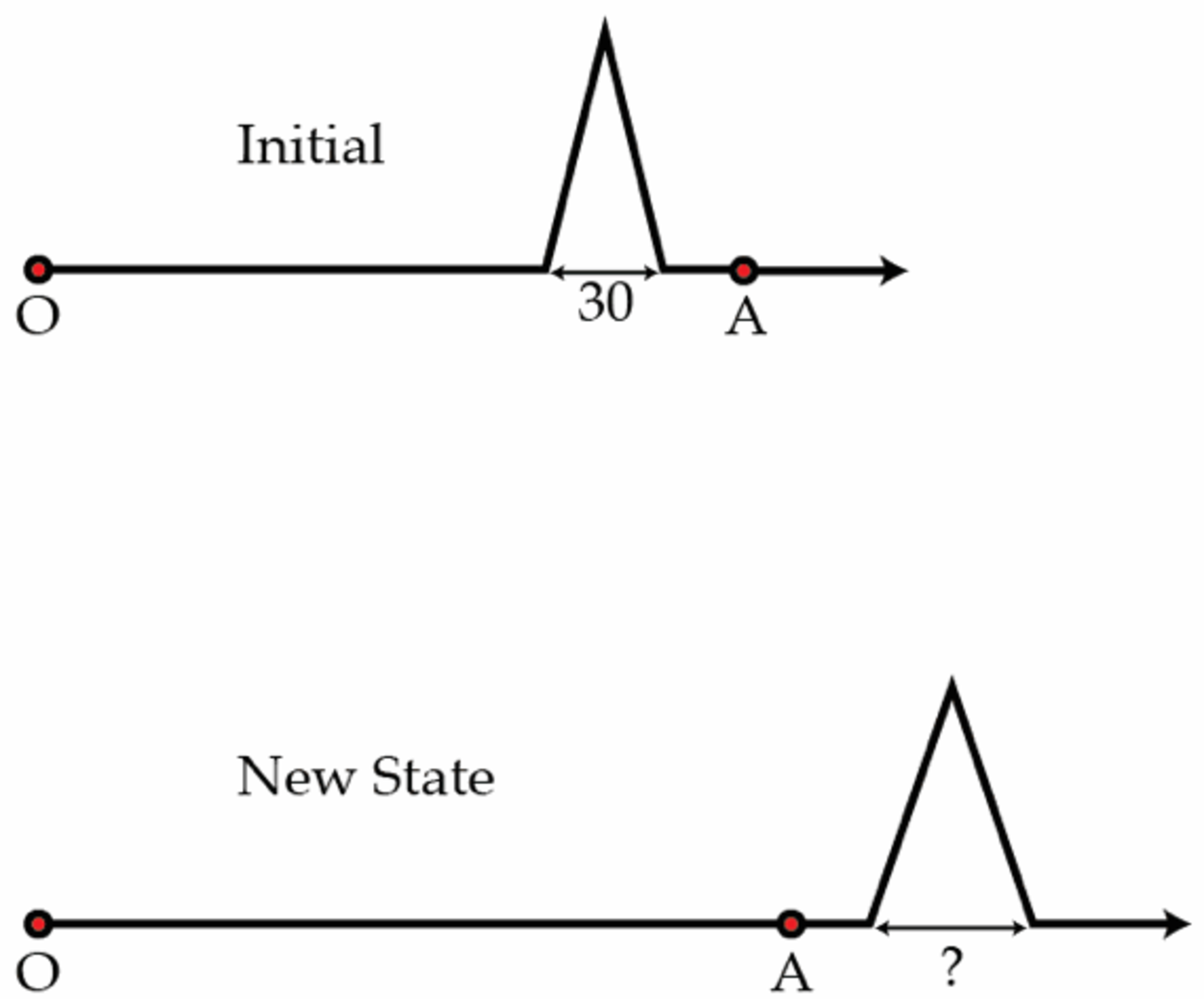Pulse transmission
A triangular deformation (a pulse) is travelling on a tightened string with the speed 5 m/s . The length of the base of the triangle is 3 0 cm . The pulse suddenly reaches a point where the wire connects to a different wire made out of a different material. The pulses travel with the speed 7 m/s in this material. What will be the length of the base of the triangle (length of the pulse) in cm on the other wire?

The answer is 42.
This section requires Javascript.
You are seeing this because something didn't load right. We suggest you, (a) try
refreshing the page, (b) enabling javascript if it is disabled on your browser and,
finally, (c)
loading the
non-javascript version of this page
. We're sorry about the hassle.
12 solutions
Wouldn't the tension in the string change as the pulse straddles A and thereby perhaps pull the trailing edge of the pulse along faster?
Also, is the answer the same regardless of shape of pulse, e.g. does a sine wave have its wavelength change by the same amount?
Log in to reply
The strings of both the materials are attached and tightened together, so they both share the same tension, thus when one part of the pulse is on the string where it moves faster, it won't pull the other part on the other string any faster, for there's no additional tension. It's the tension that keeps the pulse moving, not the pulse that causes tension, at least from the perspective of the mathematical formulations.
Frequency of the pulse is constant . Nobody used this.
Well explained! Thanks!
perfect
Knowing that the height of the two pulses are the same and;
5 m/s = 30 cm, 7 m/s = ?
regardless of the units of measurements, we can use ratio and proprtion..
7 ( 3 0 ) ( 7 ) = 42 cm
No they are not, amplitude would increase., so would the height of pulse.
I also used the same way to figure it out.
it should be 5 ( 3 0 ) ( 7 ) = 42 cm
i also used the equation for DIRECT PROPORTION to find out the answer
We know that the pulse before it hits the new wire is travelling at 5 m/s. We can call this speed v . The 30 cm could be called the pulse's period.
To get to 7 m/s in the new wire, we must multiply v by 5 7 . Because the pulse is dilating itself by 5 7 times as it moves through point A, we just multiply the period, 30 cm, by 5 7 in order to get our answer of 42 cm.
or since spped and wavelenght are directly proportional we can simply use d proportions..
The frequency of the pulse will remain same at both the wire. So time taken to cover the base of the triangle at 1st case and case will be same. so x/700=30/500,where x is the length of the at 2nd case. i.e x=42 cm
How much time will it pulse to cross 'A' point? 3 0 / 5 0 0 s e c = 3 / 5 0 S e c For this much time we will have speed difference and hence pulse will widen up. At what rate will it widen up? 7 0 0 − 5 0 0 c m / s e c = 2 0 0 c m / s e c so how much did it widen up? 3 / 5 0 ∗ 2 0 0 = 1 2 c m So the final length will be = 3 0 + 1 2 = 4 2 c m
5/7 = 0.7143 so, if both cases are the same then; 30/0.7143 = 41.999 or 42 (cm)
Frequency of the travelling wave remains constant, so...
for 1st case f1=(5/30) Hz
for 2nd case f2=(7/x) Hz
Equating those two we get x=42
Speed= (dist. traveled /time taken) => time taken = (dist. traveled / speed)
from first case, T= 30/5
from second case, T = X/7
so, 30/5=X/7
X=42
wave velocity=wavelength.frequency, As the frequency remains constant for a wave producing source , wavelength would be proportional to velocity.
5:30 7:x
cross multiply:
7*30 over 5 which gives you 42.
As the speed is 5m/s on the first wire and the gap is of 30 cm, we can deduce that if the speed was 1m/s, the gap would be of 6 cm. On the second wire though, the speed changes to 7 m/s (which is 7 x 1m/s), so we must multiply 6 cm by 7 too. 6 x 7 = 42, and that is equal to the length of the gap (which also happens to be the answer).
Let speed Is V , and Base Is D In The 1st one V=D/T T= D/V T=30/5 T=6 ...... In The 2nd one. V=D/T D=V T D=7 6 D=42
Let us go to the point in time when the front end of the pulse just touches A . We know, that the distance that the back end of the pulse has to travel to reach A is 0 . 3 . It will take 5 0 . 3 = 0 . 0 6 s to do so. But, in these 0 . 0 6 seconds, the front end will travel at 7 m / s and will cover a distance of 7 × 0 . 0 6 = 0 . 4 2 m = 4 2 c m . Now, the back end will also enter the faster medium and travel at the same velocity as the front end. Therefore, the length of the base is 4 2 c m